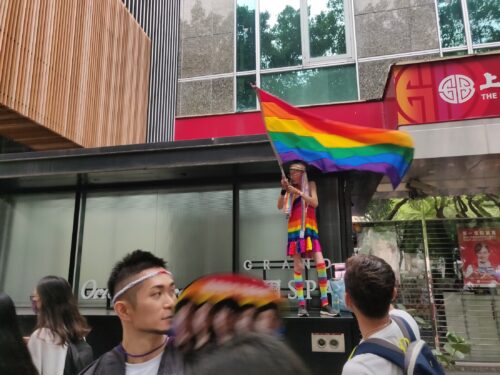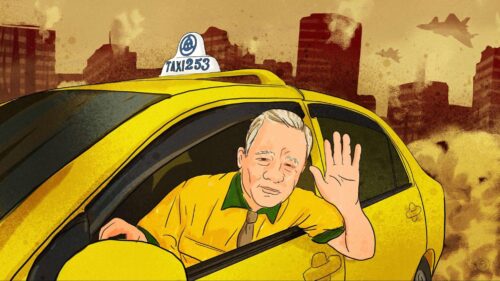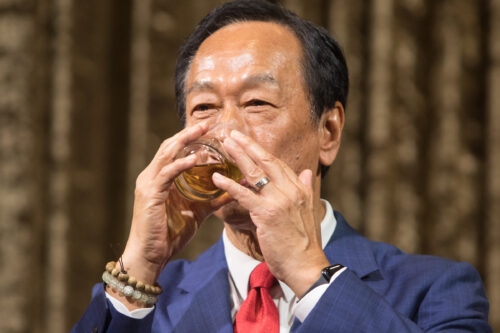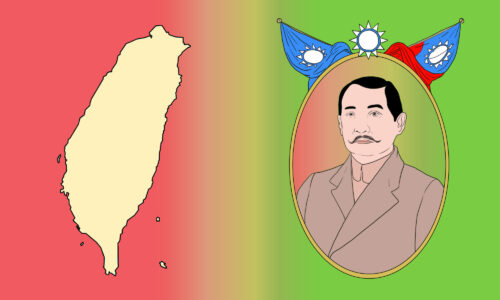The place where the P.R.C. stops and Taiwan begins
Identity, politics, and territorial control in the Kinmen islands.
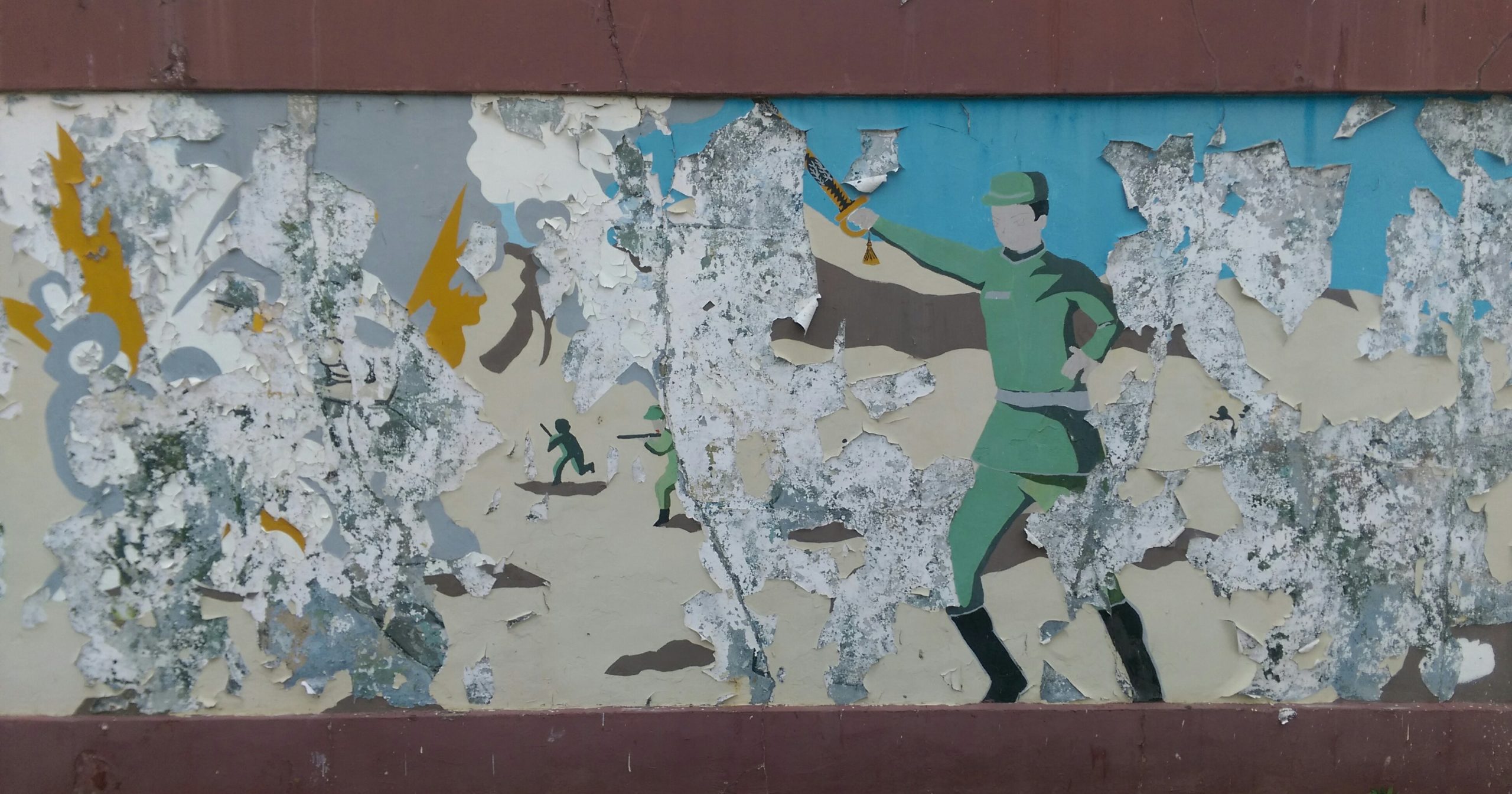
Kinmen, Taiwan — Standing on the seaweed-strewn beaches on the west side of Taiwan’s Kinmen County (金门县 jīnmén xiàn), it’s hard not to think about the mainland. After all, the buzzing Chinese metropolis of Xiamen is — on good days — clearly visible in the distance, less than four miles away.
Whether you take the half-hour ferry from Xiamen or the hour-long flight from Taipei, Kinmen County, a handful of small hilly islands off the Fujian coast, is a relaxed place to pootle about on a bike, eat too much, and chat with welcoming locals. It is also one of the best places to understand the significance of why Taiwan is still officially called the Republic of China (R.O.C.).
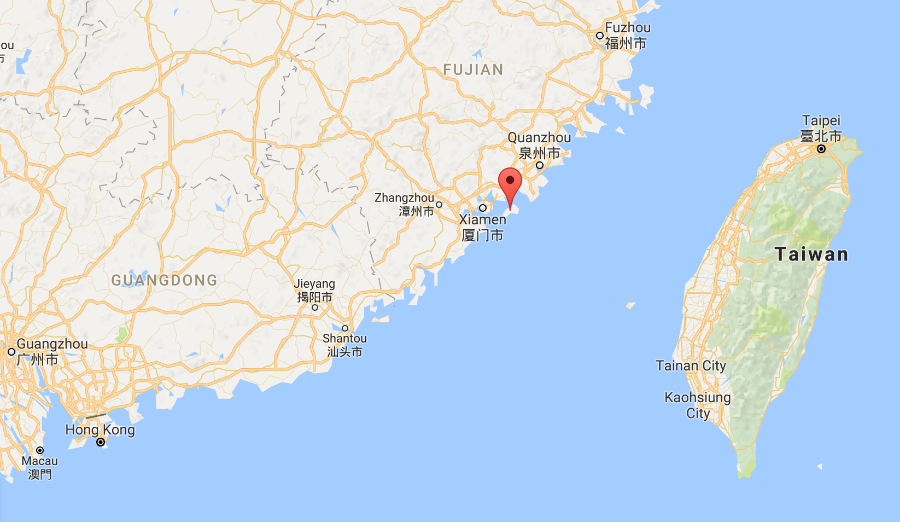
Until recent years, Kinmen’s history deviated significantly from what was going on in the rest of Taiwan. But despite physical proximity, cultural ties, and economic interactions, for many people here, the People’s Republic of China is still a world away from Kinmen, the most “Chinese” part of Taiwan.
“We don’t dislike mainlanders, we just don’t want to rely on them for anything,” said Hsu Chin-cheng. “Mainland culture and Taiwan culture are different.”
Hsu’s family has raised cattle on Kinmen for decades and owns a beef jerky business and a restaurant specializing in Taiwan-style beef noodles. The majority of his customers are Taiwanese.
China, he said, operates differently from Taiwan.
“When I negotiate an agreement with a Taiwanese client or one from Hong Kong, it’s pretty much a done deal,” he told me over tea at his restaurant. “When dealing with mainland Chinese, you reach an agreement with one person who says ‘Okay!,’ and then once you start moving forward, another person says, ‘No, you can’t,’ without giving a good reason.”
Hsu cited Beijing’s recent move to reduce group tours to Taiwan as an example of the risk of depending upon the Chinese market — a widespread issue that President Tsai Ing-wen is working on with her economic pivot toward Southeast and South Asia plus Oceania.
At its peak during the administration of Tsai’s predecessor, Ma Ying-jeou, hundreds of busloads of Chinese tourists circled Kinmen’s eponymous big island daily, with some companies investing heavily to get in on the action. Today, China-focused tour groups “have more employees than customers,” he said.
The high hopes some have had for making money off of Chinese tourists in Kinmen are apparent in the main island’s two duty-free malls, one near the terminal that receives ferries from Xiamen, the other on the island’s opposite side. Even one mall seems a bit much for an island that, despite being more than twice the size of Manhattan, has only about 70,000 residents.
Both malls are owned by the Taiwanese company Ever Rich, which has duty-free retail locations around the country. When Ever Rich Golden Lake Plaza opened near the peak of Chinese tourism in Kinmen, it boasted Asia’s largest duty-free store, a luxury mall, an imported goods supermarket, and a multiplex cinema. On a rainy afternoon last month, 600 Chinese visitors in plastic ponchos participated in a promotional “health walk” among famous sites in Kinmen. Ever Rich was one of the sponsors.

Some of the first tourist attractions that the crowd walked by were the small Fujian-style ancestral villages featuring beautiful small family homes made of brick, earth, stone, and tile, integrated with ingenious water management systems that channel rainwater into a communal reservoir. Compared with the rest of Taiwan, Kinmen noticeably lacks a Japanese architectural or infrastructure legacy. This is because during the majority of the 50 years that most of present-day Taiwan was part of Japan’s empire, Kinmen was ruled from the mainland by the Qing dynasty and later the Republic of China under Chiang Kai-shek’s Kuomintang (KMT) Party and military.
The Kuomintang arrive at Kinmen
The Kuomintang arrived in Taiwan on American boats after Japan’s surrender in 1945. The island, also known as Formosa, had effectively been promised to Chiang by Franklin D. Roosevelt, and was incorporated into the Republic of China. The KMT’s arrival was followed by a siphoning of resources, supplies, and equipment to Taiwan from China, where Chiang was fighting a losing battle against Mao’s Communist army.
Kinmen is where in late October 1949, the KMT army, which the Communists had vanquished from the mainland, halted the momentum of the People’s Liberation Army, which had been steadily taking control of coastal islands on China’s eastern and southern coasts. This pause in the Communists’ quest to annihilate the KMT was more or less cemented by the outbreak of the Korean War the following year, and closer Taiwan-U.S. ties afterward.
The new capital of the R.O.C. province of Fujian, then romanized as Fukien, was moved to Kinmen. The status of Kinmen County and Lienchiang County — previously referred to as Quemoy and Matsu — as counties of Fujian Province, R.O.C., had strategic value for both Chiang and Mao.
For Chiang, having a bit of territory that had not previously been Japanese Formosa assisted in selling the idea that the Kuomintang was the rightful ruler of China, even though it only administered the provinces of Fujian and Taiwan. These bits of Fujian were also useful in ensuring a “hot” zone during the Cold War, thus keeping the R.O.C., and Chiang, firmly in the minds of politicians in Washington, D.C. For Kinmen residents, who needed special permission to visit the “Taiwan Province” of the R.O.C., life was not easy, as this passage from Academia Sinica scholar Nathan Batto’s excellent Taiwan political blog Frozen Garlic notes:

The civilians lived under very strict rules. To give some famous examples, basketballs and volleyballs were tightly monitored to ensure that no extras were available for use as floatation devices; residents were not allowed to learn how to swim, and all windows had to be blacked out at night. … In 1958, the PRC started shelling Kinmen and threatened to overrun the island. Eventually, they stopped trying to come ashore, but they continued shelling for decades. The every other day bombings were a fact of life for two generations of people. On even days, you could relax. On odd days, you needed to be at home and in your bomb shelter by 7:30pm.
In the rest of Taiwan, life was also difficult. The February 28 Massacre of 1947 had resulted in the killing or disappearing of thousands, and effectively all of the Taiwanese elite, which was primarily composed of descendants of immigrants that had arrived centuries earlier from Fujian and Guangdong, many of whom had intermarried with Taiwan’s indigenous peoples. After that, decades of martial law — officially declared in 1949 — were used to cow the populace into submission, with special severity for “mainlanders” who had fled China toward the end of the civil war in the late 1940s that were typically accused of being Communists, and who sometimes were.
In reaction to heavy-handed KMT rule, a small democracy movement with the aim of removing the R.O.C. from Taiwan grew from humble underground beginnings into the Tangwai (党外 dǎng wài) movement of the late 1970s and early 1980s. Tangwai means “outside of the party” — in this case, outside of the KMT. In July 1987, martial law was lifted and the surprise ascendency of the first non-mainlander KMT president, Lee Teng-hui, paved the way for the R.O.C.’s first direct elections, for the legislature in 1992 and the presidency in 1996.
As all this happened in the rest of Taiwan, Kinmen remained militarized until 1992, when it was plunged straight into democracy. Wang Ling, the coordinator at Kinmen-based creative platform Local Methodology and owner of a bed and breakfast in a traditional clan village, said that one of the reasons that Kinmen has remained conservative and loyal to the KMT is that it barely participated in the struggle for democracy that the rest of Taiwan experienced.
“Kinmen has always had things given to it,” Wang said. “I think that’s why democracy here isn’t fully developed.”

DPP bad, KMT good
The R.O.C. has never been as “Taiwanese” as it is today. President Tsai’s Democratic Progressive Party (DPP), with its roots in the Tangwai and Taiwan independence movements, controls both the executive and legislative branches of the R.O.C. government for the first time. The KMT is nearly bankrupt, and is, among many Taiwanese, quite unpopular. But it still holds appeal in Kinmen, which like the KMT, has closer ethnic and historical ties to China than the rest of Taiwan.
Under Taiwan’s first DPP president, Chen Shui-bian, links between Kinmen and Xiamen opened up in 2008, allowing Kinmen residents easy access to China’s fast-growing economy, and allowing Chinese tourists to finally set foot on the island where the Communists were stopped.
Not far from the memorialized site of the decisive Battle of Kuningtou, which ensured that Kinmen remained under R.O.C. control, I stopped to take photos and ended up conversing with 23-year-old Hsu Yi-hsuan (no relation to Mr. Hsu above). Hsu was born in Kinmen but attended university in Taipei — a world away from Kinmen — for several years. Hsu said his identity and worldview began to change during and after his stay in Taipei, gradually becoming more “Taiwanese.”
“When I was in school, teachers told us, ‘The Republic of China is good, the KMT is good, and the DPP is bad,’” he told me.
“DPP be damned!” blurted out an eavesdropping schoolgirl who looked about 10 years old as she walked past us with two giggling friends. When I asked why she said that, she told me her teacher told her the DPP was “very bad.”
Since Chen Shui-bian’s shocking 2000 victory, Beijing has consistently worked to present a similar version of reality to Taiwanese voters: DPP bad, KMT good. It is not the first time in the past century that the Communists have seen the value of the Nationalists in advancing their goals, and vice versa. Both parties have done all they can to present the KMT as the only party in Taiwan capable of managing the relationship with China in a manner that does not result in disaster.
For a small number of Taiwanese, that message was driven home by China’s poaching last month of diplomatic relations with Panama, one of the few remaining countries that still recognized the Republic of China. Now only 19 countries and the Vatican recognize the R.O.C., and many are expecting that number to continue to dwindle.
History and legitimacy
In some ways, the P.R.C. picking off the R.O.C.’s remaining diplomatic allies is reminiscent of the People’s Liberation Army’s island hopping toward Taiwan in the 1940s. Had Mao’s troops succeeded in taking Kinmen and Lienchiang counties, then it would have succeeded in retaking all of pre-1945 R.O.C. territory. Chiang’s retention of those small bits of Fujian may have provided the R.O.C. with more legitimacy than if it only controlled what had been Japanese Formosa before the war’s end, but it also gave Mao’s P.R.C., the successor of the R.O.C. on the mainland, an “in” to claim that the R.O.C. was administering what should be P.R.C. sovereign territory. Put more simply, the R.O.C. Fujianese islands give at least a veneer of credibility to a small part of Beijing’s claim over all of what we colloquially refer to today as Taiwan.

Similarly, if P.R.C. pressure tactics result in the R.O.C. not being recognized by any country in the world, a new can of worms is opened, which could result in a crisis of legitimacy for the R.O.C. government. This would then potentially strengthen the argument already espoused by some for the killing off of the R.O.C. and the establishment of a Republic of Taiwan, which would have no claim over Kinmen.
Discussing this possibility, the younger Hsu said the idea of being abandoned to China by the rest of Taiwan would gut him.
“I’m Kinmenese, and I support Taiwan,” he said, looking out toward the Chinese coast. “Whatever Taiwan becomes, I hope it will include us as well.”
